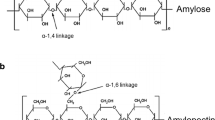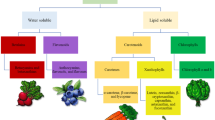Abstract
This work presents a novel colorimetric sensor based on nanoscaled chemo dyes which can detect inert volatile organic compounds (VOCs) during the mildewing process of stored wheat. 1-Octen-3-ol and 3-octanone were selected as the marked compounds by gas chromatography mass spectrometry (GC-MS) analysis. In this work, poly(styrene-co-acrylic acid) microbeads were prepared by soap-free emulsion copolymerisation. Boron-dipyrromethene dyes with PSA were fabricated as a novel sensor to obtain digital data before and after exposure to VOCs, and the correlation coefficients (R2) between the digital data and the concentration of VOCs were 0.8078 and 0.8324, respectively. And root mean square errors (RMSEs) were 3.05 g L−1 and 1.65 g L−1, respectively. The data based on the identification of mouldy wheat samples were processed by principal component analysis (PCA) and linear discriminant analysis (LDA). The optimal performance obtained for the LDA model was 83.33% in the prediction set and 90% in the calibration set.









Similar content being viewed by others
References
Askim JR, Li Z, Lagasse MK, Rankin JM, Suslick KS (2016) An optoelectronic nose for identification of explosives. Chem Sci 7:199–206
Bäck J, Aaltonen H, Hellén H, Kajos M, Patokoski J, Taipale R, Pumpanen J, Heinonsalo J (2010) Variable emissions of microbial volatile organic compounds (MVOCs) from root-associated fungi isolated from Scots pine. Atmos Environ 44:3651–3659
Cramariuc O, Aittala Pekka J, Hukka TI (2013) Molecular dipole effects on tuning electron transfer in a porphine-quinone complex: a DFT and TDDFT study. J Mol Model 19(2):697–704
Campos VP, Pinho RSCD, Freire ES (2010) Volatiles produced by interacting microorganisms potentially useful for the control of plant pathogens. Ciência E Agrote 34:525–535
Deshmukh S, Bandyopadhyay R, Bhattacharyya N, Pandey RA, Jana A (2015) Application of electronic nose for industrial odors and gaseous emissions measurement and monitoring—an overview. Talanta 144:329–340
Ezhilan M, Nesakumar N, Babu KJ et al (2018) An electronic nose for royal delicious apple quality assessment—a tri-layer approach. Food Res Int 109:44–51
Fang K, Ren B (2014) A facile method for preparing colored nanospheres of poly (styrene-co-acrylic acid). Dyes Pigments 100:50–56
Fu B, Yu HC, Huang JW, Zhao P, Liu J, Ji LN (2009) Mn(III) porphyrins immobilized on magnetic polymer nanospheres as biomimetic catalysts hydroxylating cyclohexane with molecular oxygen. J Mol Catal A Chem 298(1–2):74–80
Feng T, Zhuang H, Ye R, Jin Z, Xu X, Xie Z (2011) Analysis of volatile compounds of Mesona Blumes gum/rice extrudates via GC-MS and electronic nose. Sensors Actuators B Chem 160(1):964–973
Gogus F, Ozel MZ, Kocak D, Hamilton JF, Lewis AC (2011) Analysis of roasted and unroasted Pistacia terebinthus volatiles using direct thermal desorption-GCxGC-TOF/MS. Food Chem 129:1258–1264
Gu HY, Sun YH, Li SF (2016) Theoretical study of the sensor design strategy for colorimetric sensor array based on density functional theory. Comput Theor Chem 1094:13–16
Golob V, Tusek L (1999) VIS absorption spectrophotometry of disperse dyes. Dyes Pigments 40:211–217
Guan BB, Zhao JW, Lin H, Zou XB (2013) Characterization of volatile organic compounds of vinegars with novel electronic nose system combined with multivariate analysis. Food Anal Methods 7(5):1073–1082
Jha SK, Josheski F, Marina N, Hayashi K (2016) GC-MS characterization of body odour for identification using artificial neural network classifiers fusion. Int J Mass Spectrom 406:1387–3806
Kramer R, Abraham WR (2012) Volatile sesquiterpenes from fungi: what are they good for? Phytochem. Rev 11:15–37
Kim SY, Li J, Lim NR, Kang BS, Park HJ (2016) Prediction of warmed-over flavour development in cooked chicken by colorimetric sensor array. Food Chem 211:440–447
Loudet A, Burgess K (2007) BODIPY dyes and their derivatives: syntheses and spectroscopic properties. Chem Rev 107(11):4891–4932
Lin H, Man ZX, Guan BB, Chen QS, Jin HJ, Xue Zl (2017) In situ quantification of volatile ethanol in complex components based on colorimetric sensor array. Anal Methods 9:5873–5879
Lin H, Man ZX, Kang WC, Guan BB, Chen QS, Xue Zl (2018) A novel colorimetric sensor array based on boron-dipyrromethene dyes for monitoring the storage time of rice. Food Chem 268:300–306
Lu J, Tan Y, Wang G (2013) Discriminative multimanifold analysis for face recognition from a single training sample per person. IEEE Trans Pattern Anal Mach Intell 35(1):39–51
Liu Q, Zhao N, Zhou D, Sun Y, Sun K, Pan L, Tu K (2018) Discrimination and growth tracking of fungi contamination in peaches using electronic nose. Food Chem 262:226–234
Müller A, Faubert P, Hagen M, Castell WZ, Polle A, Schnitzler JP, Rosenkranz M (2013) Volatile profiles of fungi—chemotyping of species and ecological functions. Fungal Genet Biol 54:25–33
Martinez AM, Kak AC (2001) PCA versus LDA. ITPAM 23(2):228–233
Magan N, Evans P (2000) Volatiles as an indicator of fungal activity and differentiation between species, and the potential use of electronic nose technology for early detection of grain spoilage. J Stored Prod Res 36(4):319–340
Moreira N, Lopes P, Ferreira H, Cabral M, Pinho PGD (2016) Influence of packaging and aging on the red wine volatile composition and sensory attributes. Food Packag Shelf Life 8:14–23
Majchrzak T, Wojnowski W, Dymerski T et al (2017) Electronic noses in classification and quality control of edible oils: a review. Food Chem 2017:192–201
Mu X, Wu CL, Lai JP, Chen JB, Zheng JS, Li C (2011) A facile and general approach for the synthesis of fluorescent silica nanoparticles doped with inert dyes. Chin Sci Bull 56:3242–3246
Nilsson T, Larsen T, Montanarella L, Madsen J (1996) Application of head-space solid phase microextraction for the analysis of volatile metabolites emitted by Penicillium species. J Microbiol Methods 25:245–255
Niu J, Zhang W, Ru S (2013) Effects of potassium fertilization on winter wheat under different production practices in the North China Plain. Field Crop Res 140(1):69–76
Pico J, Bernal J, Gómez M (2015) Wheat bread aroma compounds in crumb and crust: a review. Food Res Int 75:200–215
Pasanen AL, Lappalainen S, Pasanen P (1996) Volatile organic metabolites associated with some toxic fungi and their mycotoxins. Analyst 121:1949–1953
Radi, Ciptohadijoyo S, Litananda WS, Rivai M, Purnomo MH (2016) Electronic nose based on partition column integrated with gas sensor for fruit identification and classification. Comput Electron Agric 121:429–435
Rao JP, Geckeler KE (2011) Polymer nanoparticles: preparation techniques and size-control parameters. Prog Polym Sci 36:887–913
Sung J, Kim BK, Kim BS, Kim Y (2014) Mass spectrometry-based electric nose system for assessing rice quality during storage at different temperatures. J Stored Prod Res 59:204–208
Sanaeifar A, Mohtasebi SS, Ghasemi-Varnamkhasti M, Ahmadi H (2016) Application of MOS based electronic nose for the prediction of banana quality properties. Measurement 82:105–114
Splivallo R, Ottonello S, Mello A, Karlovsky P (2011) Truffle volatiles: from chemical ecology to aroma biosynthesis. New Phytol 189(3):688–699
Salinas Y, Ros-Lis JV, Vivancos JL, Martínez-Máñez R, Aucejo S, Herranz N, Lorente I, Garcia E (2014) A chromogenic sensor array for boiled marinated turkey freshness monitoring. Sensors Actuators B Chem 190:326–333
Shahin MA, Symons SJ (2011) Detection of Fusarium damaged kernels in Canada Western Red Spring wheat using visible/near-infrared hyperspectral imaging and principal component analysis. Comput Electron Agric 75(1):107–112
Seitz, L.M., Sauer, D., Chung, O.K. (1998). GC-MS data presented in Aromascan grain project report on infected grain types. Aroma Scan plc, 1988.
Sapirstein H, Yao W, Koksel F (2018) A study of factors influencing the water absorption capacity of Canadian hard red winter wheat. J Cereal Sci 81:52–59
Wu W, Zhao J, Guo H, Sun J, Ji S, Wang Z (2012) Long-lived room-temperature near-IR phosphorescence of BODIPY in a visible-light-harvesting N^C^N PtII–acetylide complex with a directly metalated BODIPY chromophore. Chem Eur J 18(7):1961–1968
Yu H, Wang J (2007) Discrimination of LongJing green-tea grade by electronic nose. Sensors Actuators B Chem 122(1):134–140
Zhang L, Tian F, Pei G (2014) A novel sensor selection using pattern recognition in electronic nose. Measurement 54:31–39
Funding
This work was financially supported by the Foundation for the Innovation Fund Designated for Graduate Students of Jiangsu Province (Project No. SJCX17-0581), the National Key Technology R&D Program of China (Grant Nos. 2016YFD0401205-3 and 2017YFC1600603) and the China Postdoctoral Natural Science Foundation (20166M601746).
Author information
Authors and Affiliations
Corresponding author
Ethics declarations
Conflict of Interest
Hao Lin declares that he has no potential conflict of interest. Wencui Kang declares that he has no potential conflict of interest. Felix Y. H. Kutsanedzie declares that he has no potential conflict of interest. Quansheng Chen declares that he has no potential conflict of interest.
Ethical Approval
All procedures performed in studies involving human participants were in accordance with the ethical standards of the institutional and/or national research committee and with the 1964 Helsinki Declaration and its later amendments or comparable ethical standards. This article does not contain any studies with human participants or animals performed by any of the authors.
Informed Consent
Informed consent was obtained from all individual participants included in the study.
Additional information
Publisher’s Note
Springer Nature remains neutral with regard to jurisdictional claims in published maps and institutional affiliations.
Electronic supplementary material
ESM 1
(DOCX 45 kb)
Rights and permissions
About this article
Cite this article
Lin, H., Kang, W., Kutsanedzie, F.Y.H. et al. A Novel Nanoscaled Chemo Dye–Based Sensor for the Identification of Volatile Organic Compounds During the Mildewing Process of Stored Wheat. Food Anal. Methods 12, 2895–2907 (2019). https://doi.org/10.1007/s12161-019-01617-1
Received:
Accepted:
Published:
Issue Date:
DOI: https://doi.org/10.1007/s12161-019-01617-1




